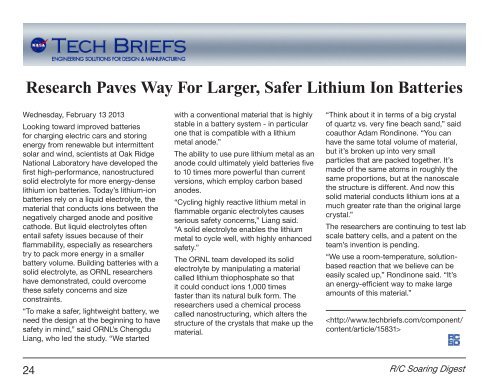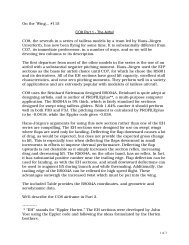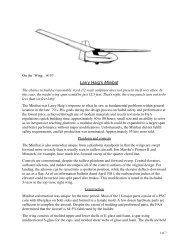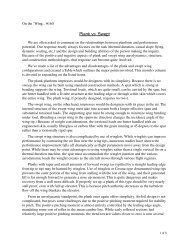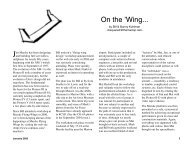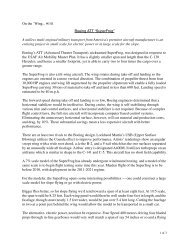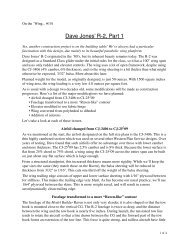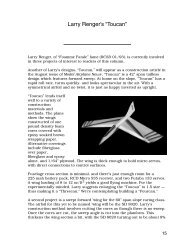RCSD-2013-03 - Rcsoaring.com
RCSD-2013-03 - Rcsoaring.com
RCSD-2013-03 - Rcsoaring.com
- No tags were found...
You also want an ePaper? Increase the reach of your titles
YUMPU automatically turns print PDFs into web optimized ePapers that Google loves.
Research Paves Way For Larger, Safer Lithium Ion BatteriesWednesday, February 13 <strong>2013</strong>Looking toward improved batteriesfor charging electric cars and storingenergy from renewable but intermittentsolar and wind, scientists at Oak RidgeNational Laboratory have developed thefirst high-performance, nanostructuredsolid electrolyte for more energy-denselithium ion batteries. Today’s lithium-ionbatteries rely on a liquid electrolyte, thematerial that conducts ions between thenegatively charged anode and positivecathode. But liquid electrolytes oftenentail safety issues because of theirflammability, especially as researcherstry to pack more energy in a smallerbattery volume. Building batteries with asolid electrolyte, as ORNL researchershave demonstrated, could over<strong>com</strong>ethese safety concerns and sizeconstraints.“To make a safer, lightweight battery, weneed the design at the beginning to havesafety in mind,” said ORNL’s ChengduLiang, who led the study. “We startedwith a conventional material that is highlystable in a battery system - in particularone that is <strong>com</strong>patible with a lithiummetal anode.”The ability to use pure lithium metal as ananode could ultimately yield batteries fiveto 10 times more powerful than currentversions, which employ carbon basedanodes.“Cycling highly reactive lithium metal inflammable organic electrolytes causesserious safety concerns,” Liang said.“A solid electrolyte enables the lithiummetal to cycle well, with highly enhancedsafety.”The ORNL team developed its solidelectrolyte by manipulating a materialcalled lithium thiophosphate so thatit could conduct ions 1,000 timesfaster than its natural bulk form. Theresearchers used a chemical processcalled nanostructuring, which alters thestructure of the crystals that make up thematerial.“Think about it in terms of a big crystalof quartz vs. very fine beach sand,” saidcoauthor Adam Rondinone. “You canhave the same total volume of material,but it’s broken up into very smallparticles that are packed together. It’smade of the same atoms in roughly thesame proportions, but at the nanoscalethe structure is different. And now thissolid material conducts lithium ions at amuch greater rate than the original largecrystal.”The researchers are continuing to test labscale battery cells, and a patent on theteam’s invention is pending.“We use a room-temperature, solutionbasedreaction that we believe can beeasily scaled up,” Rondinone said. “It’san energy-efficient way to make largeamounts of this material.”24 R/C Soaring Digest


